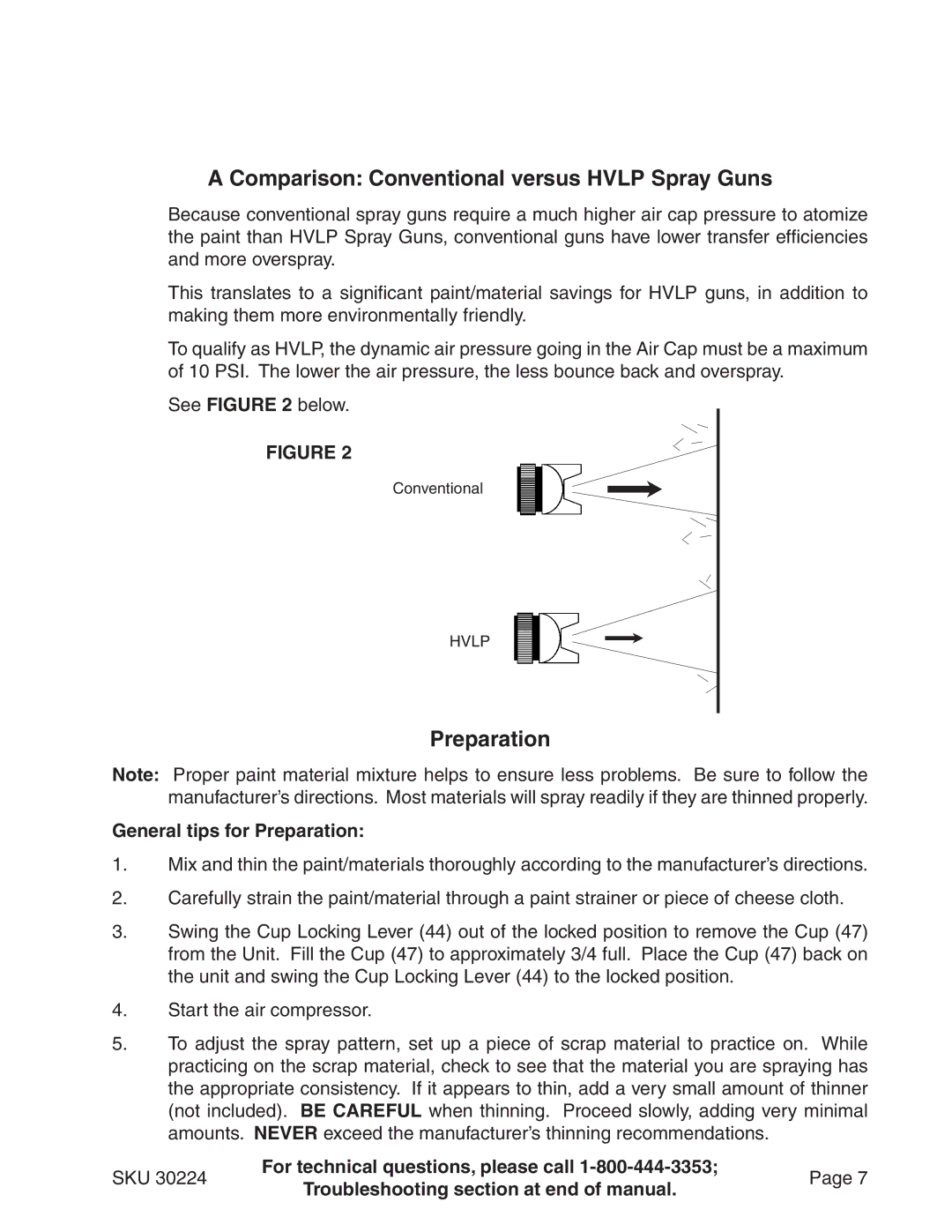30224 specifications
Harbor Freight Tools 30224 is a versatile and robust power tool designed to meet the needs of both hobbyists and professionals alike. Known for its affordability and reliability, this tool is a testament to Harbor Freight’s commitment to providing quality equipment at competitive prices.One of the main features of the Harbor Freight Tools 30224 is its powerful motor. Equipped with a sturdy electric motor, it delivers consistent performance, making it suitable for a variety of tasks ranging from cutting and sanding to drilling and grinding. The tool's speed settings are adjustable, allowing users to easily adapt to different materials and project requirements. This flexibility ensures a smooth operation, whether working with wood, metal, or plastic.
Another key characteristic of the Harbor Freight 30224 is its ergonomic design. The tool is designed to minimize user fatigue during prolonged use, featuring a comfortable grip that enhances control and precision. This is especially beneficial for contractors and DIY enthusiasts who often spend extended hours on their projects. The lightweight construction further adds to its ease of use, facilitating effortless maneuverability in tight spaces or overhead projects.
In terms of technologies, the Harbor Freight Tools 30224 implements advanced safety features, such as a protective cover and an auto-shutoff mechanism, which mitigate risks during operation. The built-in dust collection system is another innovative characteristic, helping to keep your workspace clean and reducing the inhalation of harmful particles.
Maintenance and reliability are also focal points of the design. The tool's components are built from high-quality materials, ensuring longevity and reducing the frequency of repairs or replacements. Users have reported that regular maintenance is simple and straightforward, making it an excellent addition to any toolbox.
Furthermore, the Harbor Freight Tools 30224 is compatible with a variety of attachments and accessories, enhancing its versatility. Whether you're looking to sand a surface, polish metal, or drill into concrete, you can tailor the tool to suit your specific needs with the right accessories.
In summary, the Harbor Freight Tools 30224 stands out for its powerful performance, ergonomic design, safety features, and versatile compatibility. It's an affordable choice for anyone looking to enhance their toolkit with a reliable tool that can handle a multitude of tasks with ease and efficiency.

